RAVEN is poised to launch an innovative new “Intervener Fund” to support Nations that wish to intervene in legal challenges that directly affect their communities and governance. We intend to support interveners on behalf of Beaver Lake Cree as the Nation heads to the Supreme Court over an advance cost award: a win would set an important precedent to safeguard access to justice for Indigenous legal challenges.
Beaver Lake Cree are poised to set a precedent that will make the courts more accessible for Nations who are pursuing their rights to protect land, air and water for future generations.
So: what IS an intervener?
An intervener is a third party permitted by a court to make arguments in a case. Interveners are sometimes referred to as “friends of the court,” or as public interest advocates. While organizations such as the Canadian Civil Liberties Association and groups like Amnesty International can and do intervene in legal challenges, large corporations whose interests are affected by proceedings are also frequently granted intervener status.
Intervention is a strategic way to bring Indigenous perspectives to legal challenges without Nations having to shoulder the entire financial burden of bringing a case through the justice system. The lower costs of bringing actions – coupled with the influence that interveners can have on case outcomes – makes this a strategic way forward for RAVEN’s partners who are asserting their rights through the courts.
Intervention in action
RAVEN has already supported Indigenous interveners in the Bitumen Reference case, in which B.C.attempted to assert its authority to restrict the flow of bitumen through pipelines traversing the province. As part of our campaign in support of Nations opposing the Trans Mountain pipeline expansion project, RAVEN provided funding for Indigenous interveners from Heiltsuk, Haida and Little Shuswap Nations. The three First Nation interveners argued in support of upholding B.C.’s jurisdiction to protect communities and the environment, while emphasizing the right of First Nations to apply their own laws on their territories. As part of their argument, the Heiltsuk described their first-hand experience with legal gaps in federal oil spill laws, which became woefully apparent after the Nathan E. Stewart oil spill.
Though the Supreme Court found that Canada has exclusive jurisdiction over pipelines that cross provincial boundaries, interveners forced the court to take into account the perspectives and experience of the original title holders and stewards of the land.
A study published in Osgoode Hall Law Journal found that, in the presence of interveners, judges tend to lean more liberally in their decisions. The authors also found that the number of interveners at the Supreme Court has been rapidly increasing, concluding that “by allowing a higher number of intervening parties, the Court appears to be using the interventions to better understand the impacts of its decisions.” 1
Standing toe-to-toe with corporate interests
Interveners in the Bitumen Reference case also included representatives of corporate interests: Trans Mountain Corporation was at the table, as were the Canadian Association of Petroleum Producers and Enbridge. This is not unusual: corporations and businesses intervene, regularly, in Indigenous Nations’ cases. In Nova Scotia (Aboriginal Affairs) v. Pictou Landing First Nation, Northern Pulp – who aimed to build an effluent facility without consulting First Nations – were granted intervener status in the appeal.
Meanwhile, in Mikisew Cree First Nation v. Canada, the Supreme Court was asked to consider the government’s constitutional duty to consult when passing environmental legislation that could affect the exercise of treaty and/or Aboriginal rights. In its struggle to strike a balance between upholding the protection of Aboriginal rights and title against the maintenance of parliamentary sovereignty, the court heard from a number of interveners.
In the case, four separate Nations intervened alongside Indigenous organizations such as the Assembly of First Nations, Manitoba Metis Federation, and the Grand Council of the Crees. While the Supreme Court ultimately ruled that the duty to consult is not triggered during the law-making process, the court unanimously endorsed the value and wisdom of consulting Indigenous groups prior to enacting legislation.
Intervention can be a beautiful way to put solidarity into action: when Tsilhqot’in’s epic, decades-long title challenge finally made it to the Supreme Court, interveners included Hul’qumi’num Treaty Group, Council of the Haida Nation, and the Office of the Wet’suwet’en Chiefs. Their contributions assisted the court to rule in favour of Tsilhqot’in Nation and award title to lands and waters in their traditional territories.
Leave to Intervene: a six-factor test
The test for leave to intervene in the Federal Court and the Federal Court of Appeal involves: proving that the intervener will be directly affected by the outcome of the case; that the issue at stake is in the public interest; and, that there is no other way for the intervener to bring their evidence and perspective to the court.
The six-factor test also involves proving that the intervener has unique insight not already being provided by another party, and that the case evaluation will be strengthened by the intervener — essentially, a test of the necessity for this particular intervention.
The Federal Court of Appeal summarizes this test as follows: “the salient question is whether the intervener will bring further, different and valuable insights and perspectives that will assist the Court in determining the matter.”
For example, in Squamish Nation v. British Columbia — the legal action backed by the RAVEN Pull Together community — a number of industry associations applied to intervene. They were denied leave, due to lack of direct legal interest in the challenge, which hinged upon the claim that the province failed in its duty to consult First Nations when approving projects that have a direct impact on Indigenous communities. The dismissal noted that, while they had a potential economic interest in the Trans Mountain pipeline and tankers project’s completion, their legal rights and obligations would not be affected by the outcome of the appeal. Further, the court found the proposed interveners did not have a distinctive perspective justifying granting intervener status, and the issues they sought to advance would expand the scope of the appeal in a way that would be unfair to the appellant.2
We are thrilled that an Intervener Fund is taking shape at RAVEN, so Nations that meet the six-part test can be supported when they step up to protect the interests of their communities, lands and waters. Subscribe to our newsletter or follow RAVEN on social media to find out when the fund officially launches.
Footnotes






